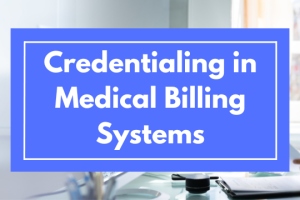Schedule A Demo Now
Maximizing Your Private Practice Revenues Through Effective Billing Practices
If you are looking for a way to boost revenues in your private practice, the first thing to look at is your billing and payment processes. Recent and ongoing changes can impact billing practices and regulations, which can make it increasingly difficult for practice owners and managers to maximize their revenues or even create a streamlined, effective billing process. Billing errors, along with a failure to stay updated on regulations, have resulted in as much as $125 billion being left uncollected per calendar year.
Combined with a decreasing ability for patients to pay their bills and out-of-pocket costs that have risen by as much as 71% in the past decade, it’s easy to see how many private practices fail to manage billing effectively and collect payments to keep revenues high and reduce the number of accounts that go to collections. Fortunately, although some of the data paints a bleak picture, there is a lot that you can do to boost your revenues with effective, well-planned billing practices.
Part of that comes in improving your processes. In doing that, you will come across several areas where outsourcing and automation can deliver more than you might anticipate. It starts by taking a proactive approach to your billing procedures, allowing you to prevent issues before they arise and ensure that you are always properly reimbursed so that you can continue to provide care to your patients.
Improve Eligibility Verifications
Private practice doctors have a lot of work on their plates with insurance and billing. It can all become very time-consuming if you aren’t prepared. Fortunately, there are also several tools to help automate verification and other billing-related practices and processes. Automation improves efficiency in several ways and there are plenty of applications for it in your private practice. Patient eligibility and insurance verification are areas that you will want to automate to make things quicker and easier.
Automated verifications save staff the hassle of trying to figure out if people are covered. It also reduces claim rejections and removes one of the most common pain points from the billing process. When you automate steps like this, your human staff can spend more time focusing on the aspects of billing that require a human, including explaining the procedures and patient responsibility to ensure that nothing is overlooked.
Verify Payment Processes
In addition to verifying the eligibility of patients for coverage, you should also verify the insurance and method of payment right away. Staff should check this information at every appointment and if patients have access to a self-service portal, this information should be available to edit on their end. Automating payments and offering various methods for digital payment processing will ensure that timely payments are made.
By and large, people say that one obstacle to paying medical bills is having the right avenues—even some of the biggest insurance companies and healthcare conglomerates have messy, unrefined payment options online, including static payment sites that can lead to missed or misapplied payments, among other issues. When you automate these processes and integrate all of your billing practices, it will be much easier to maximize revenues by making sure that your practice is getting paid.
What KPIs Should You Measure?
One common question from private practice providers is what KPIs (key performance indicators) should be monitored to help improve the revenue cycle. Although there are several KPIs to consider putting on your list, the top five for optimizing revenue include:
- Total reimbursements collected
- Net collection ratio
- First-pass acceptance/approval
- Claims denial rates
- Time spent in accounts receivable
An integrated dashboard that allows you to monitor and measure all of these KPIs and other data will make it infinitely easier for you to succeed in maximizing private practice revenues. You will have a much better understanding of where your practice stands and what can be improved to maximize your revenues, too.
Establish a Clear Collections Process
Perhaps one of the most important steps in your proactive approach to billing and payments is to establish clear, transparent policies regarding these matters and to share them with patients. Establish terms and make those terms clear with patients so they know what is expected of them in paying their medical costs. Verify patient information at each appointment and check in periodically to make sure there are no contact information updates that were missed.
You’ll want to get permission to leave messages or send text reminders regarding past-due bills or other billing matters. When you speak to patients, or when your staff does, you should kindly remind them about co-pays and other billing issues. If they have questions or concerns, be prepared to answer them. Establish the payment options that you are going to offer to your patients and make those clear upfront. And speaking of upfront, try to collect as many co-pays and cash payments at the time of the visit to save the paperwork and hassle of tracking people down later.
You can hone this process to fit the needs of your private practice, but make sure that it is streamlined, standardized, and properly expressed to all patients. The biggest reason that people don’t pay their bills, next to the obvious lack of money, is because they’re not informed about billing and payment practices or because the process is too complex. Simplify it and share it.
Enter ClinicMind, a Total Solution for Practice Management
ClinicMind is a practice management platform that is designed for total practice management, including resources for improving and monitoring revenues through the entire revenue cycle management process and more. ClinicMind also offers a host of other tools so that you can focus your efforts on the patients while things like billing, scheduling, and other admin details are handled by the platform. The EHR/RCM offers integrated support for all steps in the patient journey, which translates to better patient care. You’ll also enjoy billing services and easier documentation, along with credentialing services, allowing you to put more time into actually practicing medicine.
Conclusion
Streamlining and standardizing your billing practices will ensure that your practice is getting paid the way that it should. When you choose integrated practice management tools, you can further maximize your revenues and keep your practice profitable while delivering premium patient care. Contact ClinicMind to find out how their software can help.











